Ever since I first delved into Norse mythology, I’ve been captivated by its vast array of gods, heroes, and mythical creatures. Among these enigmatic figures are Geri and Freki, the faithful wolves of Odin, the Allfather.
While not that much is known about them, I’ll go through the little literary evidence there is about them and delve a bit more into the symbolism of wolves in the Viking Age.
Geri and Freki Origins
Odin, the wisest and most powerful of all the gods, has four animal companions, or possibly animal manifestations of himself. There are the two ravens, Huginn and Muninn as well as two wolves, Geri and Freki, who follow him everywhere.
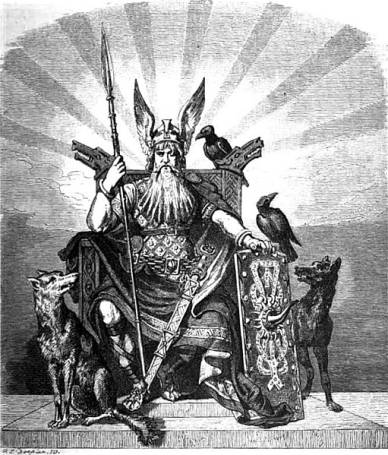
While the ravens are mentioned now and then in the sagas, less is known about the wolves. However, I do believe that if Huginn and Muninn are to be seen as fylgjur, or spirit animal extensions of Odin, there is no reason why Geri and Freki didn’t play the same part.
Almost every animal, artifact and god in Norse mythology has a rich backstory. Considering this I think the fact that we don’t know much about his wolves is likely due to their story being lost, rather than there never being one.
Meaning of Geri and Freki
The name Geri (Gera in the original Grímnismál), in Old Norse, translates to “the greedy one” or “the ravenous one.” It originates from the Proto-Germanic adjective *geraz, which means “greedy” and can be found in various forms such as Old Norse gerr, Old High German ger or giri, and Old Dutch gir.
Freki (Freka in Grímnismál), on the other hand, is derived from the Proto-Germanic adjective *frekaz. In Old Norse, it also means “greedy, or gluttonous.” This term is also attested in other languages, such as Old English frec for “desirous, greedy, gluttonous, audacious,” and Old High German freh, which also means “greedy.”
Both their names attest to how they are seen as ferocious and greedy predators. As such they are likely yearning to roam the battlefield feeding on the newly dead, much like their raven friends Huginn and Muninn.
Symbolism of Wolves in Norse Mythology
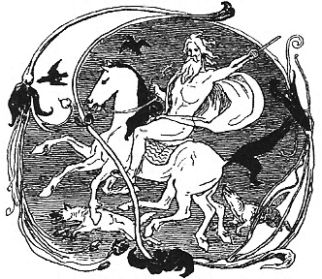
During the Viking Age, wolves played a significant role in Norse mythology and culture. They were regarded with a combination of fear, respect, and fascination due to their status as predators, their pack mentality, and their connection to various mythological figures.
Symbol of Strength and Ferocity
Wolves were seen as symbols of strength and ferocity in the Viking Age. Their prowess as hunters and their fierce nature made them a fitting representation of the warrior spirit that Vikings admired. As a result, warriors would often use wolf symbolism to emphasize their own strength and courage in battle.
Connection to Sagas and Mythological Figures
Wolves were associated with several significant mythological figures, most notably Odin and his wolves, Geri and Freki. Their loyalty to Odin and their shared role in the battlefield underscored the bond between wolves and the divine. Additionally, wolves were linked to the monstrous wolf Fenrir, one of the most feared creatures in Norse mythology, known for its prophesied role in the destruction of the gods during Ragnarok.
Two other mythological wolves were Skóll and Hati, the wolves who chased Mani and Sol (respectively) across the sky. The prophecy said that one day Hati would devour the sun, signaling the beginning of Ragnarök.
In the Völsunga Saga we hear how Sigmund and Sinfjofli, father and son, come across two men who were shape-shifters, sleeping under wolf-pelts. They take the pelts and upon wearing them, turn into ravenous, ferocious wolves, hunting men in the forest for days.
Berserkers and Ulfhednar
The connection between wolves and Viking warriors is further emphasized by the existence of Berserkers and Ulfhednar. Berserkers, possibly wearing bear pelts, were fierce warriors who entered a state of uncontrollable rage during battle. However, Ulfhednar were warriors who wore wolf pelts and were said to embody the characteristics of wolves. The Ulfhednar illustrate the Vikings’ admiration for the wolves’ ferocity and strength, using their traits to inspire fear and respect on the battlefield.
Attestations in old texts
Geri and Freki are mentioned in the Grímnismál, a poem found in the Poetic Edda. They appear in stanza 19 of the poem. Here is the original stanza in Old Norse and its English translation:
Old Norse:
“Gera ok Freka
seðr gunntamiðr
hróðigr Herjaföður;
en við vín eitt
vápngöfugr
Óðinn æ lifir.”
English translation:
“Geri and Freki,
the war-wont sates,
the triumphant Herjafather;
but on wine alone
does the weapon-decked
god, Odin, forever live.”
In this stanza, Odin, referred to as “Herjafather” (Father of Armies), is said to feed his wolves Geri and Freki, while he himself sustains solely on wine. This passage illustrates the close relationship between Odin and his wolves and highlights their importance in Norse mythology.
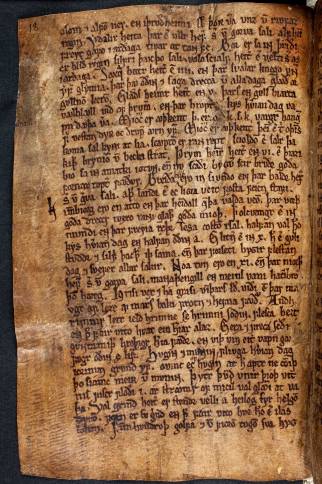
Depictions of Geri and Freki on old artifacts
The Vikings held a profound respect for wolves, acknowledging them as formidable predators and symbols of strength. Wolf imagery was frequently incorporated into Viking art, jewelry, and literature, emphasizing their importance in Viking culture and society.
While there are many Viking-age finds where wolves are depicted, whether or not it is actually Geri and Freki must usually be understood from the context. However, in the examples below one or two wolf-like animals are depicted along with a man, typically on an eight-legged horse or in company of raven-like birds. Seen together I feel it’s safe to assume they were meant to represent Geri and Freki.
Tjängvide image stone (Sweden, Gotland)
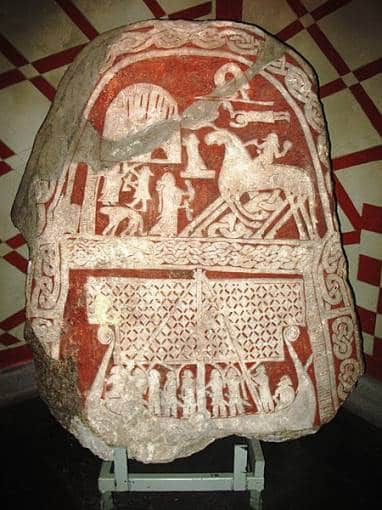
This image stone, dated to the late 8th or early 9th century, features a figure on a horse surrounded by animals, which some scholars believe might represent Odin on his eight-legged horse, Sleipnir. While the animals around the figure could be interpreted as other mythological creatures, it’s possible that they could represent Geri and Freki.
Thorwald’s Cross (Isle of Man)
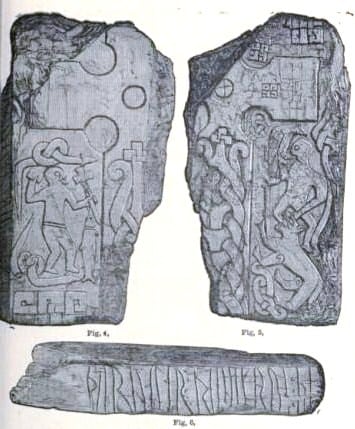
This stone cross, dated to the 10th century, features a figure with a spear accompanied by two birds, which are generally believed to be Odin’s ravens, Huginn and Muninn. Below the figure, there are two four-legged creatures that could be interpreted as Odin’s wolves, Geri and Freki.
Oseberg tapestry fragments (Norway)
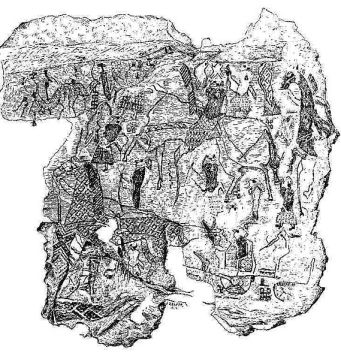
Found in the Oseberg ship burial, the tapestry fragments date back to the early 9th century. The tapestry depicts various scenes, and one of them shows a figure holding a spear and sitting on a throne, possibly representing Odin. It’s unclear whether the animals near the figure are wolves or other creatures, but given the connection between Odin and his wolves, it’s plausible that they could be Geri and Freki.
Gallehus horn (Denmark)
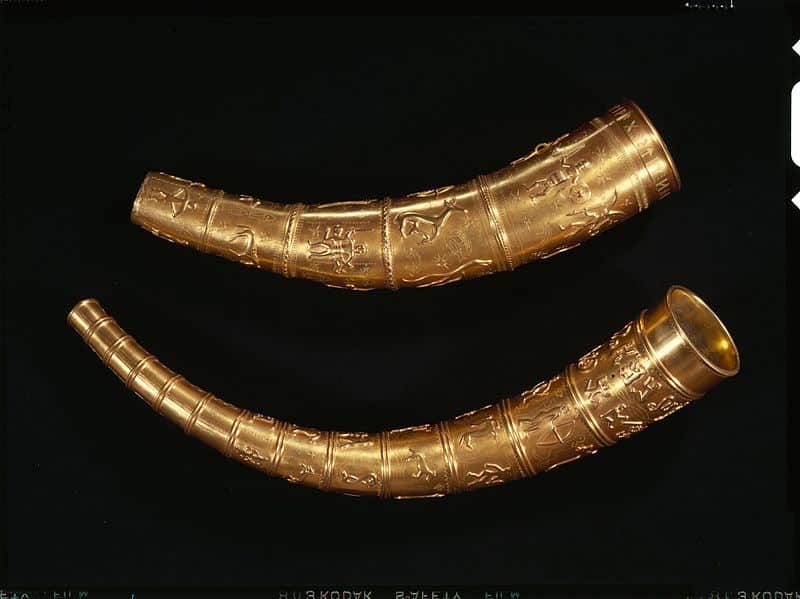
This golden horn, dated to the 5th century, features a figure of a horse accompanied by two animals. While the exact interpretation of the scene is debated, it is possible that the figure represents Odin, and the animals could be his wolves.
Again, please note that these interpretations are my own and not definitive. In my experience, Viking art is often enigmatic and open to various readings, but sometimes the simple answer is the right one.
Last thoughts on Odin’s wolves
Geri and Freki represent a fascinating aspect of Norse mythology, serving as symbols of the wild and loyal companions of Odin. While not mentioned as often or given the types of responsibilities as Huginn and Muninn, they are integral to Odin. As the god of war, never afraid of riding right into the fray of battle, Geri and Freki would be by his side.
Although far removed, they are the same ferocious animals as Fenrir, the wolf-son of Loki who will kill Odin at Ragnarök. Their connection to the Viking perception of wolves underscores the intricate relationship between humans, gods and these enigmatic predators.
FAQs about Geri and Freki
Geri and Freki are two wolves in Norse mythology who accompany Odin, the chief god of the Norse pantheon. They are loyal companions and serve as symbols of Odin’s power and wisdom.
The names Geri and Freki translate to “the ravenous” and “the greedy” in Old Norse. These names likely reflect the fierce and insatiable nature of wolves, as well as their connection to Odin.
In Norse myths, Geri and Freki are often depicted as Odin’s loyal companions and sometimes even as extensions of his authority. They accompany him on his journeys, and Odin feeds them the flesh of slain warriors while he himself consumes only wine.
Geri and Freki are mentioned in the Poetic Edda, specifically in the Grímnismál, as well as in the Prose Edda, within the Gylfaginning section. These sources provide valuable insights into their roles in Norse mythology and their connection to Odin.
Geri and Freki symbolize the fierce and predatory nature of wolves. They also represent loyalty and companionship, as provided to Odin. Their presence in Norse mythology also highlights the importance of wolves in Viking culture and society.
Featured Image Credit: Ludwig Pietsch, Public domain, via Wikimedia Commons

Great piece. What about Fenrir?
Hey Ralph, glad you liked it! We have an article going over all three of Loki’s monstrous children here!
Absolutely so thorough and gripping. Thank U
Thanks for appreciating it Lance, I’ve always been fascinated by his wolves!